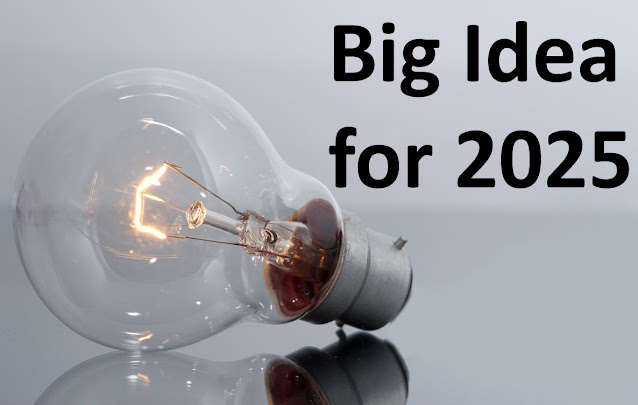Fundamental Reorientation of the State of Affairs
A fundamental reorientation of the state of affairs is about to happen; is happening now. I refer to my personal fundamental reorientation "modern accountancy" for my universe of discourse. My Seattle Method is how I am addressing this fundamental reorientation. And I am pretty sure this fundamental reorientation is coming to your universe of discourse (area of knowledge) as well.
In two previous posts I mentioned the Atomic Design Methodology (post 1; post 2). I wanted to come back to the Atomic Design Methodology because I believe it is very important.
The W3C describes the Resource Description Framework (RDF) as "a framework for representing information on the Web." See the RDF 1.2 specification here.
By "on the web" I believe the W3C means "anywhere". That that means is that information has some sort of context and that context might be local to you or global. To resolve conflicts, IRIs, or Internationalized Resource Identifiers, are used to describe things. Each of those things has some sort of datatype which are described by W3C's XML Schema Datatypes which has become a standard approach to representing datatypes. To physically encode information the W3C uses the global standard Unicode.
As I understand it, Horn Logic, is a subset of First-order Logic and is the basis for logic programming such as Prolog. Datalog is a declarative logic programming language which is a subset of Prolog which are satisfiable and provides a safe yet expressive and powerful set of First-order Logic that avoids system failures such as infinite loops and is immune from logical paradoxes that can cause catastrophic system failures. Horn Logic foundational to logic programming because it enables efficient reasoning.
Think of Datalog as a declarative logic programming tool for achieving a definite goal such as understating if a precise statement is true or question; the logic program attempts to prove using its knowledge base (rules, facts) and logical inference rules (First-order Logic) to find an answer or satisfy the question.
The trick is to organize these sorts of capabilities into a usable form. If you think about all this using Atomic Design Methodology, a framework that was developed for creating web pages but is useful for other things as well; and you add techniques such as Poka-yoke which is from Lean Six Sigma; and you apply engineering, informatics, cybernetics techniques and practices; you begin to recognize that a seismic shift is about to occur.
If you use the notion of "atoms" and "molecules" and "organisms" and "species" from Atomic Design Methodology, this is how I see things:
- Atoms are the foundation of all molecules. Each molecule has distinct properties. RDF is an atomic level tool or capability because of its flexibility. The atomic level needs to be very general in order to meet the needs of many different areas of knowledge or universes of discourse. RDF is extremely flexible.
- Molecules are two or more atoms held together by a "bond". Molecules are functional units. XBRL is at the “molecular” level, NOT at the atomic level and XBRL “stuff” like element, fact, dimension, presentation relation, calculation relation, definition relation, arcrole, role, and such are all molecules that can be, and should be able to be “distilled” down to the atomic level into RDF.
- Organisms are assemblies of molecules that function together as a logical unit and are used within some specific area of knowledge. Logical patterns bond molecules together to form organisms. Organisms, which are logical patterns of molecules which form the assemblies that are the organisms within a specific area of knowledge. OMG's Standard Business Report Model (SBRM) and XBRL Internationals Open Information Model (OIM) define the organisms that make up a business report such as "fact" and "rule" and "report" and "report model".
- Species is some set or group of organisms that are used within a specific universe of discourse or area of knowledge. The organisms used for financial reporting are different than the organisms used for human resources which are different from the organisms used for the practice of law or medicine. But, every universe of discourse has their own organisms and there can be some overlap between different universes of discourse. Each species is very specific.
Today, there are lots and lots of developer tools that have been constructed to then build the end user tools that will operate in the "species" level of my abstract model. But I bet those species specific tools will be created in the very near future.
Additional Information:




Comments
Post a Comment